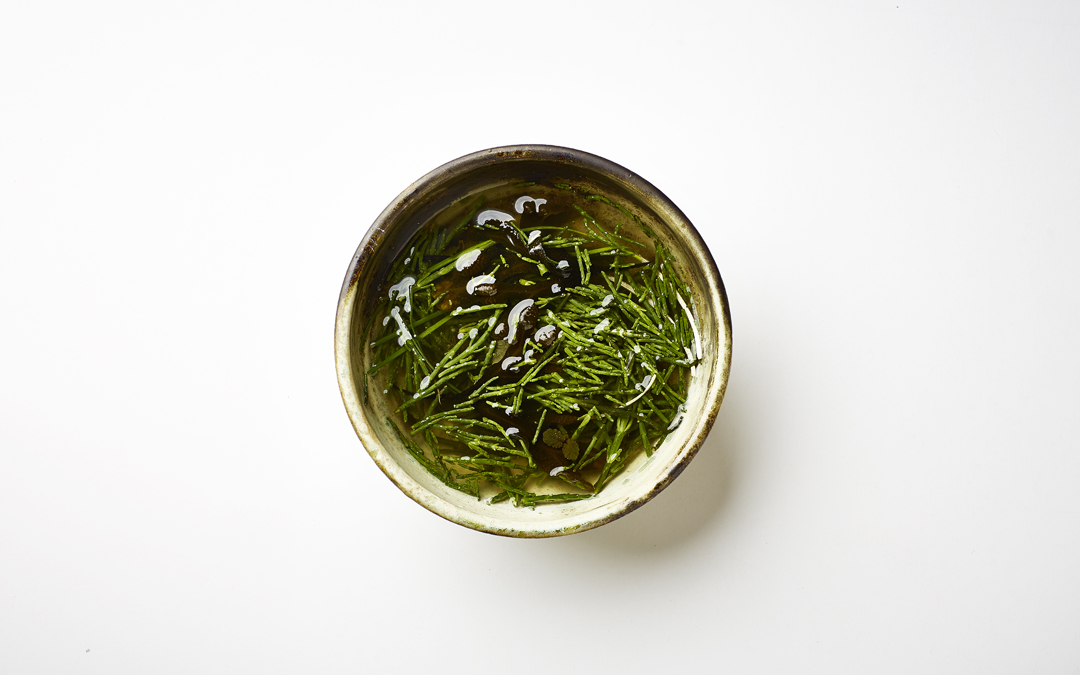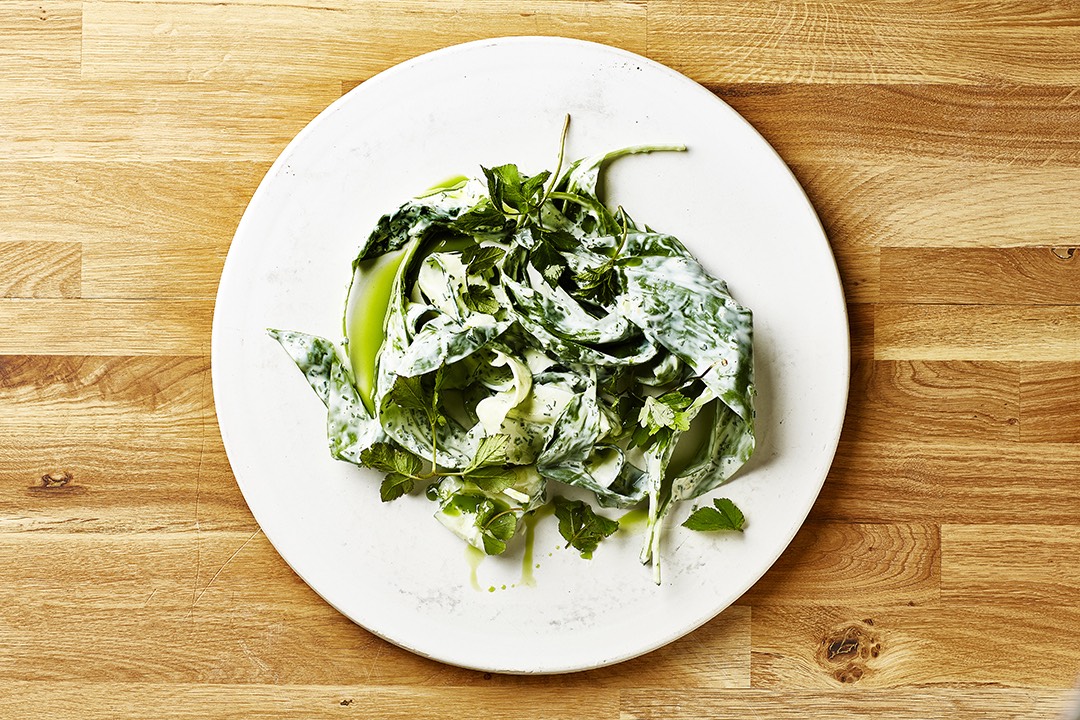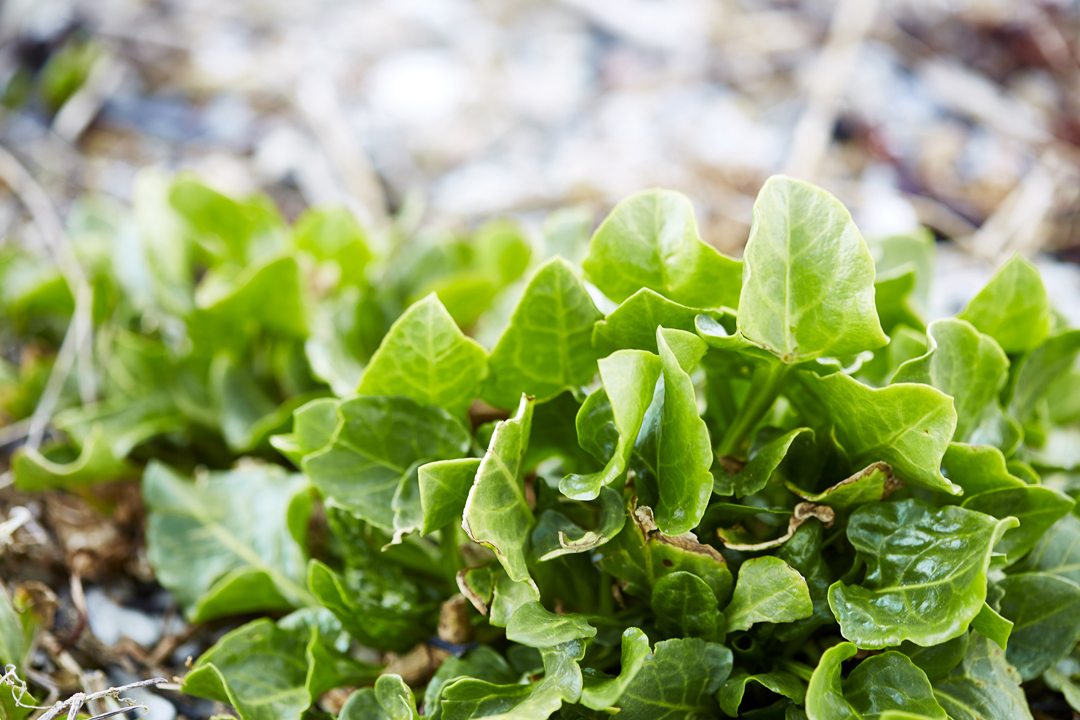
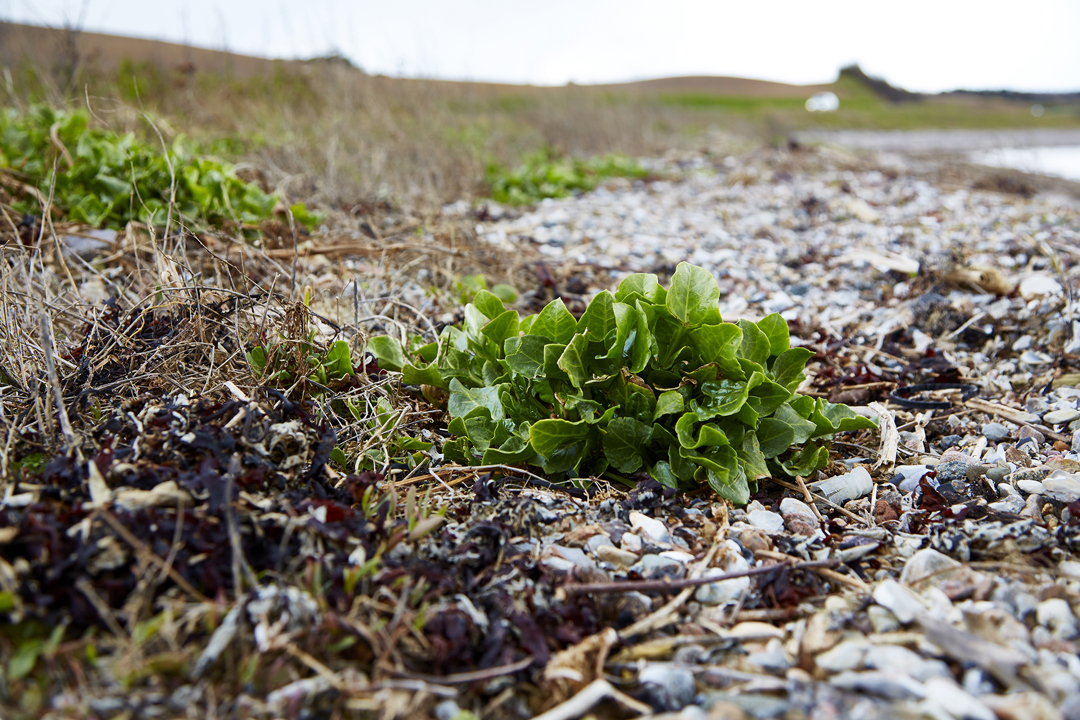
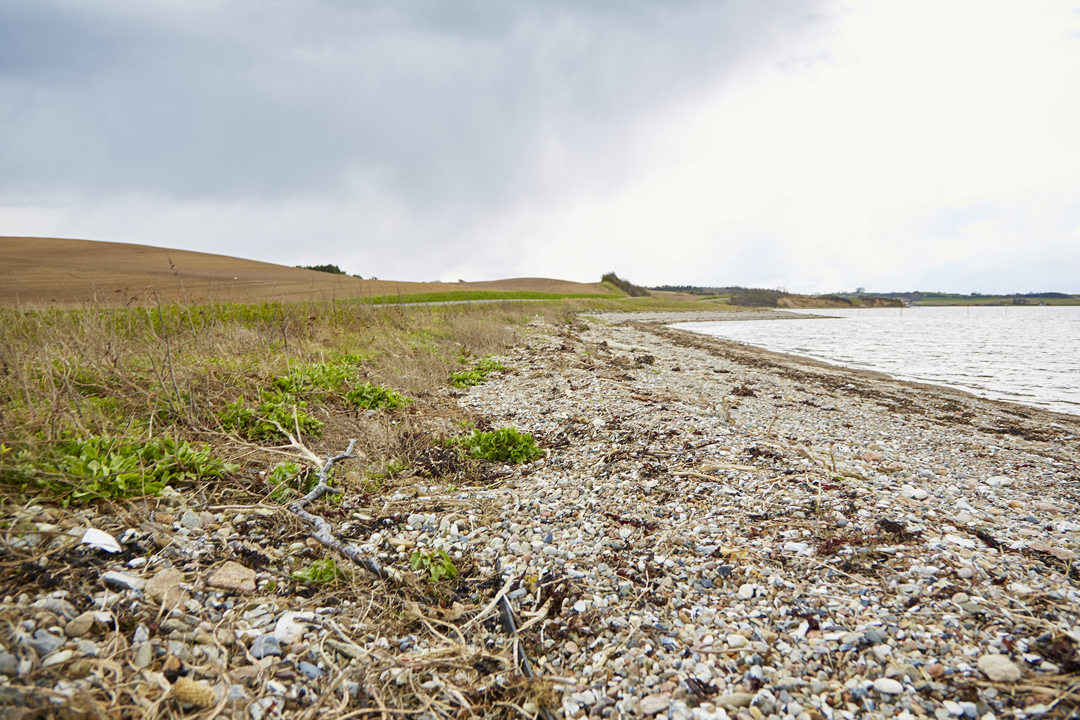
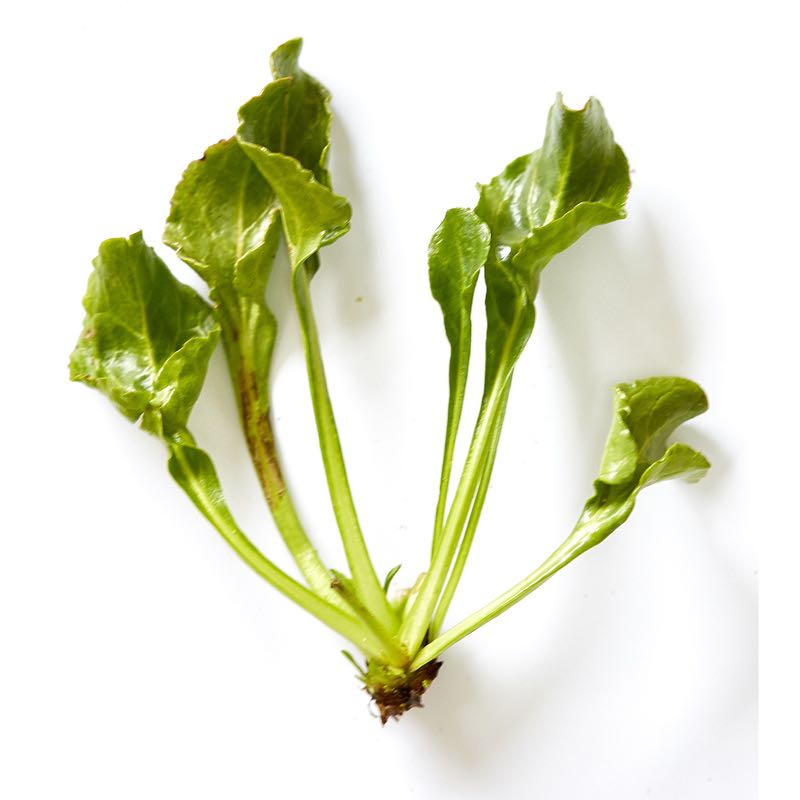
Sea beet
Sea beet is the wild ancestor of the cultivated beet. It has been used in cooking in Denmark for nearly 7000 years, and with good reason: it's one of the beach's most delicious herbs.
-
Where to Find It
You can find sea beet all over Denmark, but especially on the coasts along the Great Belt. Look for it on beaches, in salt marshes, and by on gravel and rock shorelines in towns. It fares best when in the company of decomposing seaweed on the beach. On rocky beaches and along stone formations on the coast, you can find it a bit away from the water's edge, where the washed-up plants decompose.
Salt marshes, beaches, towns.
-
When to Find It
People normally pick sea beet in the spring and the beginning of summer when the leaves are young. Later the leaves become larger and rougher, but can still be used. The plant is especially bitter while it flowers from June until September. After withering in October, its bitterness fades and then you'll have a month to pick sea beet before the season ends.
Leaves: April, May, June, October.
-
How to Spot It
In its first year of life, sea beet doesn't get particularly large, but grows in what is called a rosette—a small twist of leaves. In its second year, however, it expands rapidly, sprouting many leaves and turning bushy. Eventually it will grow to one and a half meters tall with shiny, fleshy leaves that look like fresh spinach. The leaves have curly edges, light ribs, and are shaped like eggs or arrowheads. The flowers are small and green.
-
How to Pick It
Sea beet grows in great quantities in some places, and you can harvest a great deal in those spots. Pick the young leaves at the beginning of the season and large leaves later.
Risk of misidentifying the plant
There is no risk of mistaking the plant for another dangerous or undesirable plant.




